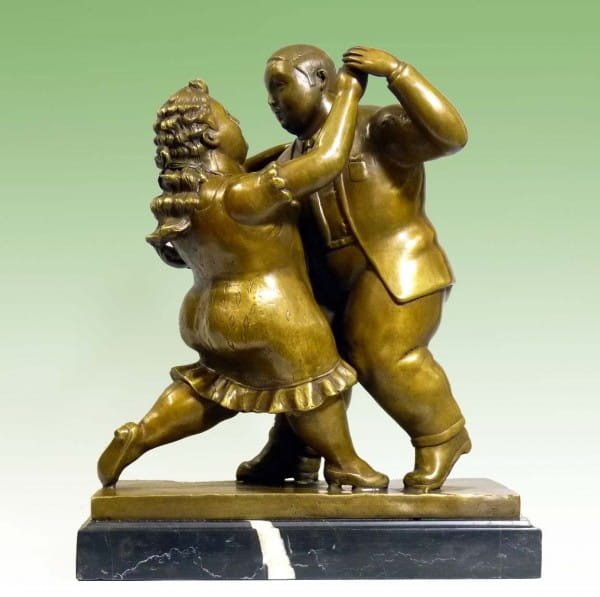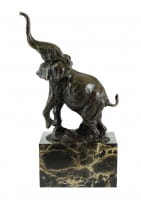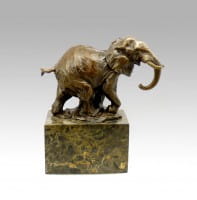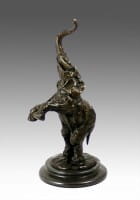Prices incl. VAT, free shipping worldwide
Ready to ship today,
Delivery time appr. 3-6 workdays










Product description
"Sculpture Botero - Dancing Couple - Fernando Botero"
| Height | 28 cm |
| Width | 23 cm |
| Length | 14 cm |
| Weight | 7 kg |
Modern Bronze Sculpture – Dancing Couple – Signed Fernando Botero
The Dancing Couple stands as one of the most enchanting Fernando Botero Sculptures, a work that captures both the intimacy of human touch and the vitality of movement. The figures, a man and a woman, are locked in a tender embrace as they dance, their rounded bodies rendered with the sculptural fullness that defines Sculpture Botero. Their faces reveal concentration and warmth, while their intertwined arms emphasize unity and rhythm. Botero’s mastery of volume transforms this simple act of dance into a monumental moment, elevating the ordinary to the extraordinary. Within the gleaming bronze surface, one sees a universal celebration of joy, harmony, and togetherness.
The origins of Botero’s dancing figures
The Dancing Couple traces its origins to a painting created in 1982, which later inspired this remarkable bronze form. This translation from canvas to three-dimensional object reflects Botero’s continual exploration of themes across media. As with other Fernando Botero Artwork, the sculpture reinterprets Colombian culture, festivity, and music through his distinct lens of exaggerated form. By magnifying volume, Botero infuses his dancers with a sense of weight that paradoxically conveys lightness and grace. The sculpture encapsulates not only Botero’s stylistic signature but also his profound engagement with everyday rituals of human life.
The language of volume and proportion
Every detail of this Sculpture Botero expresses Botero’s philosophy that volume is more than physicality—it is an idea. His exaggerated proportions, often misunderstood as caricature, are instead meditations on beauty, abundance, and human presence. The bodies of the dancers are large, yet elegant, their rounded arms and legs suggesting sensuality rather than clumsiness. In this sense, the Dancing Couple exemplifies Fernando Botero Sculptures, where form becomes both a visual language and a celebration of humanity. The bronze surface adds permanence, ensuring that this fleeting moment of movement will endure for generations.
Fernando Botero’s formative years
Born on April 19, 1932, in Medellín, Colombia, Fernando Botero was the second of three children in a modest family. His father, a traveling salesman, died when Botero was just four years old, leaving his mother to raise the family with strength and resilience. Early exposure to bullfighting culture in Medellín left a profound impression on the young artist, though he ultimately turned away from the arena in favor of painting. He began publishing illustrations in local newspapers as a teenager before moving to Bogotá to pursue his career. These experiences formed the foundation for Fernando Botero Artwork, where Latin American traditions were merged with European influences.
Education and artistic discovery
Botero’s artistic journey led him to Europe in the 1950s, where he studied at the Real Academia de Bellas Artes de San Fernando in Madrid. There, he encountered the works of Velázquez, Goya, and Titian, which deepened his understanding of classical form. His time in Florence further introduced him to Renaissance masters like Giotto and Piero della Francesca, whose sense of proportion and monumentality profoundly shaped Sculpture Botero and his paintings alike. Returning to the Americas, Botero synthesized these influences with his Colombian roots, creating an entirely new artistic vocabulary. This unique style, seen in Fernando Botero Sculptures, became instantly recognizable worldwide.
An international career and recognition
By the 1970s and 1980s, Fernando Botero Sculptures had gained international acclaim, appearing in exhibitions from New York to Paris. His works were celebrated not only for their originality but also for their accessibility, as viewers instantly recognized themselves in his themes of family, music, and celebration. The Dancing Couple embodies this universality, as dance is a global expression of joy. Versions of this bronze and similar Fernando Botero Artwork can be admired in museums and public spaces in Medellín, Bogotá, New York, and Monaco. They remain enduring icons of Botero’s ability to merge personal heritage with universal human experiences.
The legacy of the Dancing Couple
The Dancing Couple is more than a bronze—it is a living memory of Botero’s philosophy that art should speak to everyone. The sculpture belongs to the long tradition of Fernando Botero Sculptures that highlight life’s pleasures, even in their simplest forms. As with his monumental outdoor works, such as those displayed in Medellín’s Botero Plaza or along the Champs-Élysées in Paris, this piece demonstrates his belief in art as a public dialogue. Today, Sculpture Botero like the Dancing Couple continues to captivate collectors and institutions alike. It stands as a testament to Botero’s enduring contribution to modern art, reminding us that dance, joy, and human connection are timeless.
Our advantages
free shipping
Worldwide free shipping
14 days money back
You can cancel your order
within 14 days
secure payment services
Paypal, Master Card, Visa, American Express and more


















































